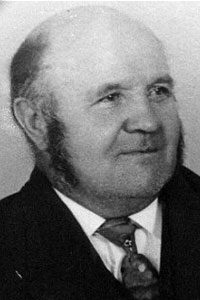Samuel Larcombe was born in the village of Musbury in Devonshire, England. In 1889, Larcombe emigrated to Canada, proceeding to Birtle, Manitoba. Upon reaching Birtle, he rented a farm which he later bought. This farm became known as the best cultivated steading in Manitoba.
Larcombe set out to prove that every vegetable grown in England could be produced in Manitoba. He first exhibited at small fairs, later meeting with marked success. His own varieties of vegetables were developed by intensive cultivation and hybridization, creating new interest in western possibilities.
In 1911 and 1912, Larcombe branched more extensively into the growing of grains for exhibition purposes. He started plot work and in 1916, “the year of the big rust,” he declared himself against rust. In a rusted field, he searched for one specimen head which had withstood the scourge. He found it. Grains from this head were sown the next year with grains from a new kind of wheat which he had developed in 1912. In 1917, he succeeded in hybridizing these two specimens, each with a rust-resistant tendency, and from them produced a distinct variety which he named “Axminster.”
Larcombe won innumerable prizes in his life-long career of vegetable and seed growing. At the 1917 World Fair in Illinois, Larcombe won the world’s championship for wheat. One of his most prized possessions was a Coronation Medal received from King George.
In 1929, when his home burned, business friends from Winnipeg rebuilt his home in appreciation of his unrelenting efforts on behalf of Canadian agriculture.


